This section introduces engaging lesson plans to celebrate Hispanic Heritage Month‚ focusing on cultural exploration‚ historical insights‚ and fostering empathy through interactive activities and discussions.
Overview of Hispanic Heritage Month
Hispanic Heritage Month‚ celebrated from September 15 to October 15‚ honors the rich cultural contributions of Hispanic and Latino communities. It emphasizes the history‚ traditions‚ and achievements of these groups‚ fostering cultural awareness and appreciation. This period highlights the diversity of Spanish-speaking countries and their influence on American society. Through educational resources and activities‚ it encourages students to explore and connect with the vibrant heritage‚ promoting inclusivity and understanding in the classroom and beyond.
Importance of Celebrating Hispanic Heritage in the Classroom
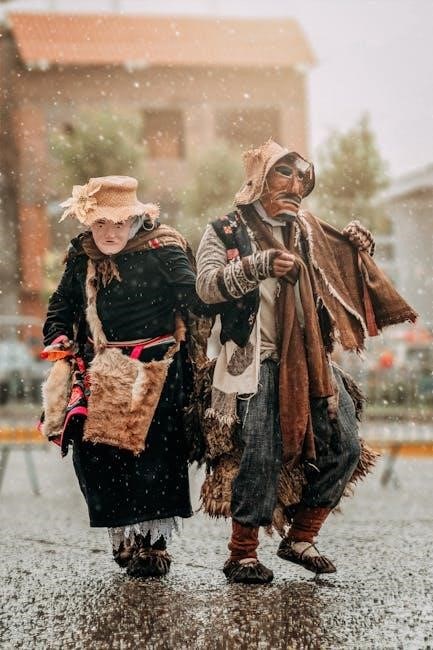
Celebrating Hispanic Heritage Month in the classroom fosters cultural awareness‚ inclusivity‚ and empathy among students. It provides opportunities to explore the history‚ traditions‚ and contributions of Hispanic and Latino communities‚ enriching students’ understanding of diverse cultures. By integrating these experiences‚ educators promote a welcoming environment where all students feel valued and connected. This celebration also encourages cross-cultural dialogue‚ breaking down stereotypes and fostering a deeper appreciation for the shared human experiences that unite us.
Key Objectives of Hispanic Heritage Month Lesson Plans
The primary goals of Hispanic Heritage Month lesson plans are to educate students about the rich history and cultural contributions of Hispanic and Latino communities. These plans aim to promote diversity‚ inclusivity‚ and cultural awareness while fostering empathy and understanding. They also seek to connect students with the vibrant traditions‚ literature‚ and achievements of Hispanic cultures. By achieving these objectives‚ educators help students develop a broader perspective and appreciation for the diverse world around them.
History of Hispanic Heritage Month
Hispanic Heritage Month honors contributions from September 15 to October 15‚ celebrating rich cultural legacies and promoting educational initiatives nationwide.
Origins and Evolution of the Celebration
Hispanic Heritage Month originated in 1968 as a week-long celebration‚ expanding to a month in 1988. It honors the independence of Latin American nations and highlights cultural richness. Over time‚ the celebration has evolved to include diverse voices‚ traditions‚ and contributions‚ fostering unity and awareness. Educational initiatives and community events now play a central role‚ ensuring the legacy of Hispanic and Latino cultures is shared and celebrated nationwide‚ promoting inclusivity and understanding for future generations.
Significant Dates: September 15 to October 15
Hispanic Heritage Month begins on September 15‚ marking independence for Costa Rica‚ El Salvador‚ Guatemala‚ Honduras‚ and Nicaragua. Mexico celebrates on September 16‚ Chile on September 18‚ and Belize on September 21. These dates honor the rich history and cultural diversity of Hispanic and Latino communities. The period from September 15 to October 15 captures the essence of heritage‚ allowing schools and communities to explore traditions‚ achievements‚ and contributions through engaging activities and educational programs‚ fostering a deeper understanding of Latino culture and identity.
Hispanic and Latino communities have profoundly shaped American history through their cultural‚ scientific‚ and societal contributions. From influential figures like César Chávez‚ who championed labor rights‚ to the vibrant arts and literature enriching U.S. culture‚ their impact is immeasurable. The development of Latin music‚ art‚ and cuisine has also deeply influenced American identity. These contributions highlight the resilience and creativity of Hispanic and Latino individuals‚ making their heritage a cornerstone of the nation’s diverse fabric. Recognizing these achievements fosters appreciation and understanding in the classroom and beyond. Discover vibrant traditions through food‚ music‚ dance‚ and art‚ fostering cultural awareness and connection to Hispanic heritage with engaging and interactive classroom activities and community events. Engage students by exploring traditional Hispanic dishes like tamales‚ empanadas‚ and arroz con pollo. These recipes highlight cultural diversity and historical roots. Hands-on cooking activities allow students to connect with heritage through preparation and tasting. Discuss the significance of meals in Hispanic communities‚ fostering appreciation for shared traditions. Encourage students to research and share family recipes‚ creating a classroom cookbook. This culinary journey enriches cultural understanding and celebrates the vibrant heritage of Hispanic communities through food. Hispanic Heritage Month comes alive through vibrant festivals‚ lively music‚ and traditional dances. Students can explore celebrations like Día de los Muertos and Carnaval‚ learning their cultural significance. Introduce rhythms like salsa‚ merengue‚ and bachata‚ and encourage dance workshops. Play traditional instruments such as maracas and guitars to immerse students in the music; These activities foster cultural appreciation and connection‚ allowing students to experience the joy and richness of Hispanic traditions. Incorporating these elements creates engaging and memorable learning experiences. Engage students with art and craft projects that highlight Hispanic traditions. Activities include creating traditional pottery‚ weaving‚ or textiles inspired by Latin American designs. Students can craft vibrant masks for festivals or design sugar skulls for Día de los Muertos. These hands-on projects foster cultural understanding and creativity. Murals depicting Hispanic history or famous figures also encourage storytelling. Such activities help students connect with the artistic richness of Hispanic heritage while developing their creative skills and appreciation for diverse traditions. This section explores how history and literature intertwine to enrich cultural understanding‚ offering insights into the Hispanic experience through educational integration and discussion in the classroom. This section delves into the rich historical journey of Hispanic communities in the United States‚ highlighting their cultural contributions‚ struggles‚ and triumphs. By examining key events and timelines‚ students gain insight into the resilience and diversity of Hispanic heritage. Interactive activities and discussions encourage a deeper understanding of how these communities have shaped American history and identity. This educational approach fosters appreciation and empathy‚ allowing students to connect with the vibrant legacy of Hispanic cultures in the U.S. This section highlights books that explore Hispanic culture‚ identity‚ and experiences‚ fostering meaningful classroom discussions. Titles like The House on Mango Street by Sandra Cisneros and Esperanza Rising by Pam Muñoz Ryan offer poignant insights into the Hispanic experience‚ encouraging students to reflect on themes of identity‚ resilience‚ and cultural heritage. These stories provide a foundation for understanding the diverse voices within Hispanic communities and promote empathy and connection among students. Literature serves as a powerful tool for bridging cultural gaps and sparking thoughtful conversations. Latino authors have profoundly enriched American literature with their unique voices and perspectives. Writers like Sandra Cisneros‚ Junot Díaz‚ and Isabel Allende have crafted compelling narratives that reflect the Hispanic experience. Their works often blend cultural traditions‚ linguistic richness‚ and personal identity‚ offering insights into the complexities of immigration‚ heritage‚ and belonging. These authors have earned critical acclaim‚ including Pulitzer Prizes‚ for their contributions to the literary landscape. Their stories resonate with diverse audiences‚ fostering a deeper understanding of Latino culture and its integral role in shaping American literature. Their legacy continues to inspire future generations of writers and readers alike. Foster empathy by exploring cultural traditions‚ personal stories‚ and historical experiences. Engage students in open discussions to promote inclusivity and break down stereotypes‚ enriching their understanding of diverse perspectives. Engage students in meaningful conversations about diversity and inclusion by exploring cultural traditions‚ personal stories‚ and historical experiences. Foster an environment where students can openly share their perspectives and listen to others‚ promoting mutual respect. Use guided discussions to address stereotypes and misconceptions‚ encouraging empathy and understanding. Incorporate activities that highlight the importance of inclusivity and celebrate the richness of Hispanic culture. These discussions will help students appreciate the value of diversity in their communities and beyond‚ fostering a more inclusive classroom environment. Encourage students and teachers to share personal stories and experiences related to Hispanic heritage. This fosters a deeper connection and understanding of diverse backgrounds. Through discussions‚ reflective journals‚ and presentations‚ students can explore their own cultural identities or learn about others. Sharing stories highlights the richness of traditions‚ challenges‚ and achievements‚ creating a safe space for open dialogue. This activity promotes empathy and appreciation for the diverse experiences within Hispanic communities‚ enriching the classroom environment with authentic perspectives and fostering a sense of belonging for all participants. Addressing stereotypes and misconceptions is crucial for fostering an inclusive environment. Engage students in open discussions to challenge preconceived notions about Hispanic cultures. Use media analysis‚ group debates‚ and reflective writing to explore common stereotypes and their impacts. Encourage students to question biases and seek accurate representations. This activity promotes critical thinking and cultural sensitivity‚ helping students develop a more nuanced understanding of diverse Hispanic experiences and contributions. It also fosters empathy and respect‚ creating a more inclusive classroom community. Engage students with grade-specific activities‚ from elementary crafts to high school discussions‚ fostering cultural exploration‚ historical understanding‚ and critical thinking tailored to each age group. Engage young students with hands-on crafts‚ traditional food tastings‚ and lively music sessions. Introduce basic Spanish phrases and explore Latin American countries through interactive maps. Use storytelling to share cultural tales and historical figures. Incorporate art projects‚ like making piñatas or vibrant murals‚ to reflect Hispanic traditions. Simple cooking activities‚ such as preparing empanadas or guacamole‚ foster teamwork and cultural appreciation. Pair these with age-appropriate videos and games to create a fun‚ immersive learning experience that celebrates diversity and builds connections to Hispanic heritage. These activities promote curiosity and early understanding of rich cultural traditions while encouraging creativity and collaboration in the classroom. For middle school students‚ Hispanic Heritage Month projects can include in-depth research on historical figures‚ cultural movements‚ and contributions of Latino communities. Assign group presentations on specific countries‚ their traditions‚ and modern influences. Encourage creative writing‚ such as poems or short stories inspired by Hispanic culture. Interactive timelines highlighting key historical events and cultural milestones can deepen understanding. Pair these with discussions on diversity‚ identity‚ and the impact of Hispanic heritage on American society. These projects foster critical thinking‚ collaboration‚ and a deeper appreciation for the richness of Hispanic culture while aligning with curriculum standards and promoting cross-cultural awareness. High school students can engage in thought-provoking discussions and debates about the contributions‚ challenges‚ and cultural significance of Hispanic and Latino communities. Topics might include the impact of immigration‚ the role of Latino leaders in history‚ and the influence of Hispanic culture on modern society. Structured debates on issues like identity‚ representation‚ and social justice encourage critical thinking and empathy. Additionally‚ analyzing primary sources‚ literature‚ and current events related to Hispanic heritage fosters deeper understanding and prepares students for nuanced conversations about diversity and inclusion in the real world. Discover a wealth of resources‚ including worksheets‚ activity guides‚ and interactive tools‚ all available on educational platforms and teacher communities to enhance lesson planning. Find a variety of curated lesson plans and worksheets designed to explore Hispanic Heritage Month. These resources‚ often available in PDF formats‚ include interactive activities‚ reading guides‚ and cultural projects. They cover topics such as history‚ art‚ and literature‚ ensuring a comprehensive learning experience. Many plans are tailored for different grade levels‚ from elementary to high school‚ and are accessible on educational platforms and museum websites. These materials are perfect for educators seeking structured and engaging ways to teach about Hispanic culture and contributions. Enhance your classroom experience with recommended videos and documentaries that highlight Hispanic culture‚ history‚ and contributions. These resources‚ often paired with lesson plans‚ provide visual learning opportunities. Documentaries explore themes like immigration‚ cultural traditions‚ and influential figures. Videos showcase festivals‚ music‚ and art‚ offering students a dynamic way to connect with Hispanic heritage. Many are available on educational platforms and museum websites‚ making them easily accessible for teachers to integrate into their curriculum and enrich student understanding of Latino experiences and achievements. Engage students with online platforms offering interactive Hispanic Heritage Month lessons. These tools provide digital activities‚ quizzes‚ and multimedia resources to explore Latino culture. Platforms like educational websites and museum portals feature virtual tours‚ games‚ and interactive timelines. They cater to various grade levels‚ ensuring personalized learning experiences. Many platforms also offer downloadable materials and lesson plan ideas‚ making it easy for teachers to integrate technology into their classrooms. These resources foster an immersive and engaging way to learn about Hispanic history‚ traditions‚ and contributions to American society. Foster connections by organizing school events‚ participating in local celebrations‚ and engaging in service projects that support Hispanic communities‚ promoting cultural awareness and unity. Organizing school events for Hispanic Heritage Month fosters cultural awareness and unity. Ideas include cultural fairs‚ guest speakers‚ traditional food tastings‚ and art exhibitions. Schools can host assemblies featuring Latino music and dance performances‚ or film screenings showcasing Hispanic contributions. Collaborative activities‚ such as creating murals or writing essays about Hispanic leaders‚ engage students. These events promote pride and understanding while celebrating diversity. Encourage student-led initiatives to make the celebrations meaningful and inclusive for all participants. Participating in local Hispanic Heritage Month celebrations enriches students’ learning experience. Schools can collaborate with community organizations to attend cultural festivals‚ parades‚ or fairs. Students can engage with traditional music‚ dance‚ and food while interacting with community members. These events provide firsthand exposure to Hispanic customs and traditions. Encouraging students to attend local celebrations fosters cultural appreciation and connects classroom lessons to real-world experiences. Such participation also strengthens community ties and promotes cross-cultural understanding. Service projects are a meaningful way to support Hispanic communities during Heritage Month. Students can participate in food drives‚ clean-up initiatives‚ or fundraising for local Hispanic organizations. These projects foster empathy and leadership while giving back. Schools can partner with community centers to organize educational workshops or mentorship programs. Such efforts not only address needs but also deepen students’ understanding of Hispanic cultures. Service projects align with lesson plan goals‚ promoting active citizenship and compassion. Evaluate student understanding through participation‚ reflective journals‚ and projects. Celebrate achievements to reinforce learning and cultural appreciation‚ ensuring meaningful engagement with Hispanic Heritage Month lessons. Evaluate student participation through active engagement in discussions‚ activities‚ and projects. Assess understanding via reflective journals‚ quizzes‚ and presentations. Use rubrics to measure depth of knowledge and cultural awareness. Provide constructive feedback to guide improvement. Encourage self-assessment to promote personal growth and ownership of learning. Celebrate progress and achievements to reinforce the value of Hispanic Heritage Month lessons. Ensure assessments are inclusive and accommodate diverse learning styles. This holistic approach fosters accountability and deeper connection to the material. Reflective assignments and journals encourage students to document their thoughts and feelings about Hispanic Heritage Month. These tools help students connect personal experiences with cultural insights. Assign prompts that guide students to articulate their reflections on traditions‚ historical figures‚ or literature. Journals can include drawings‚ poems‚ or essays. Sharing reflections fosters a sense of community and deeper understanding. This practice enhances writing skills‚ critical thinking‚ and cultural appreciation‚ creating a meaningful learning experience for all students. Celebrating student achievements is a powerful way to recognize their efforts and progress during Hispanic Heritage Month. Teachers can showcase student projects‚ presentations‚ or creative work in class or at school events. Encourage students to share their accomplishments with peers‚ fostering pride and cultural appreciation. Highlighting achievements not only boosts confidence but also reinforces the importance of diverse contributions. This practice creates a positive and inclusive learning environment‚ celebrating individual and collective success while honoring Hispanic heritage. It strengthens students’ connection to their learning and cultural identity. Celebrating Hispanic Heritage Month fosters cultural pride‚ understanding‚ and unity‚ enriching students’ educational journey and promoting a more inclusive and informed community for all. Hispanic Heritage Month lesson plans emphasize the importance of cultural awareness‚ historical context‚ and community contributions. By integrating history‚ literature‚ and art‚ students gain a deeper understanding of Hispanic traditions and their impact on American society. These lessons foster empathy‚ challenge stereotypes‚ and promote inclusivity. Through engaging activities‚ such as traditional food preparation and music exploration‚ students develop a meaningful connection to Hispanic culture. Ultimately‚ these plans inspire appreciation for diversity and encourage students to value the rich heritage of Hispanic communities year-round. Hispanic Heritage Month lesson plans inspire educators to extend cultural celebrations beyond September and October. By incorporating diverse perspectives into daily teaching‚ schools can foster an inclusive environment. Year-round activities‚ such as cultural clubs‚ book discussions‚ and community partnerships‚ help students appreciate Hispanic contributions continuously. This approach breaks down stereotypes and enriches curriculum with vibrant traditions‚ ensuring diversity is celebrated every day‚ not just during designated periods.Historical Contributions of Hispanic and Latino Communities
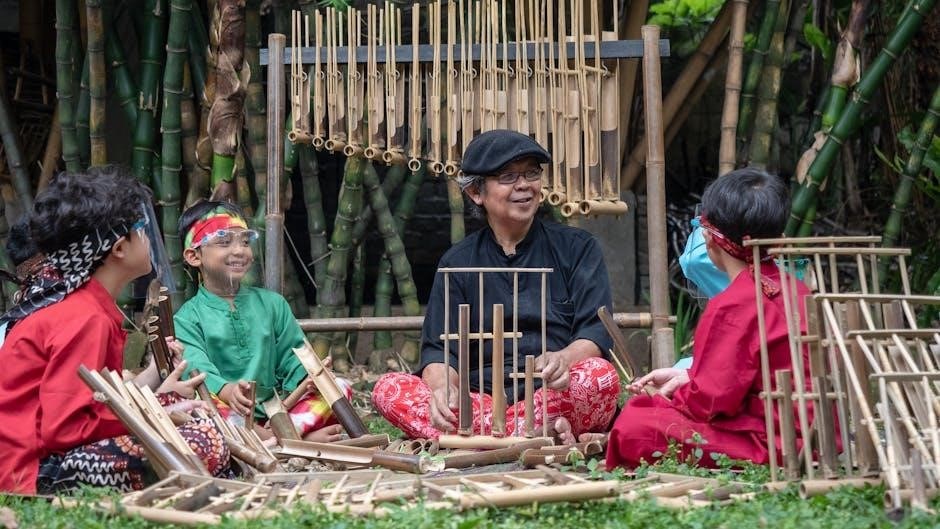
Cultural Celebrations and Activities
Traditional Foods and Recipes to Explore
Festivals‚ Music‚ and Dance
Art and Craft Projects Reflecting Hispanic Culture
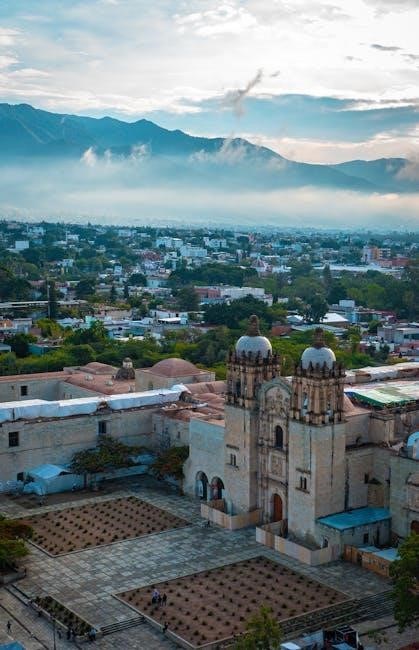
Integrating History and Literature
Exploring the History of Hispanic Communities in the U.S.
Recommended Literature for Classroom Discussions
Latino Authors and Their Contributions to American Literature
Building Empathy and Understanding
Discussing Diversity and Inclusion
Sharing Personal Stories and Experiences
Addressing Stereotypes and Misconceptions
Lessons and Activities for Different Grade Levels
Elementary School Activities
Middle School Projects
High School Discussions and Debates

Resources for Teachers
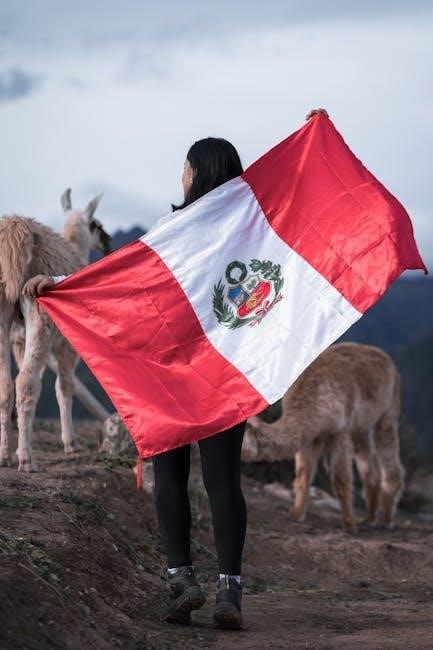

Curated Lesson Plans and Worksheets
Recommended Videos and Documentaries

Online Platforms for Interactive Learning
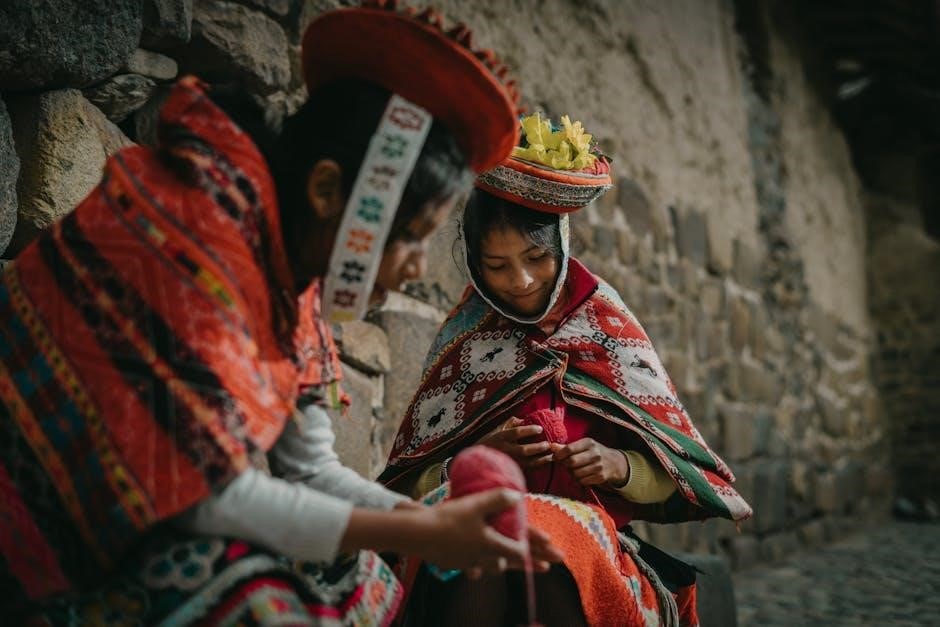
Community Engagement and Service Projects
Organizing School Events
Participating in Local Celebrations
Service Projects Supporting Hispanic Communities
Assessment and Reflection
Evaluating Student Participation and Understanding
Reflective Assignments and Journals
Celebrating Student Achievements
Summarizing Key Learnings

Encouraging Year-Round Celebration of Diversity
